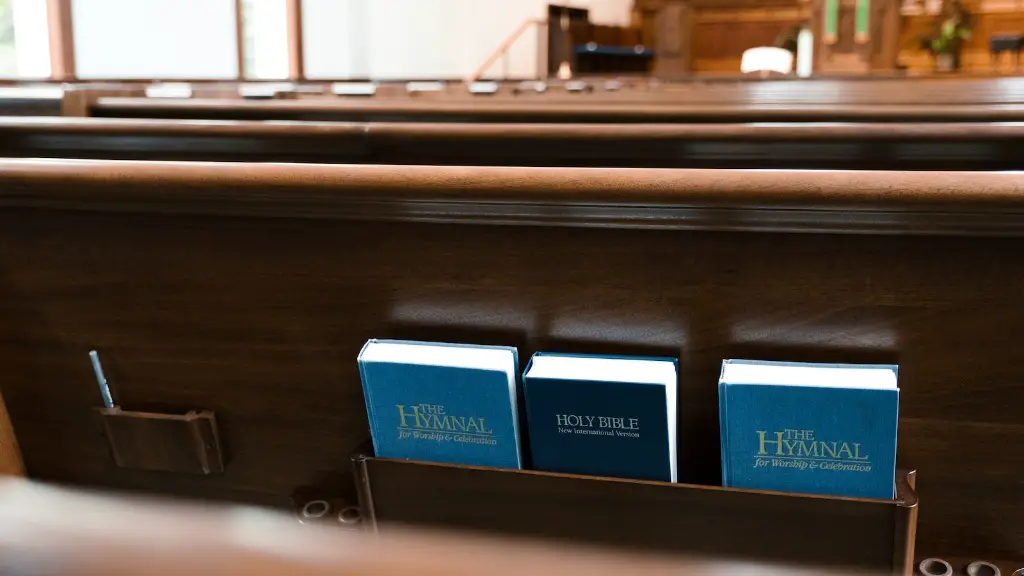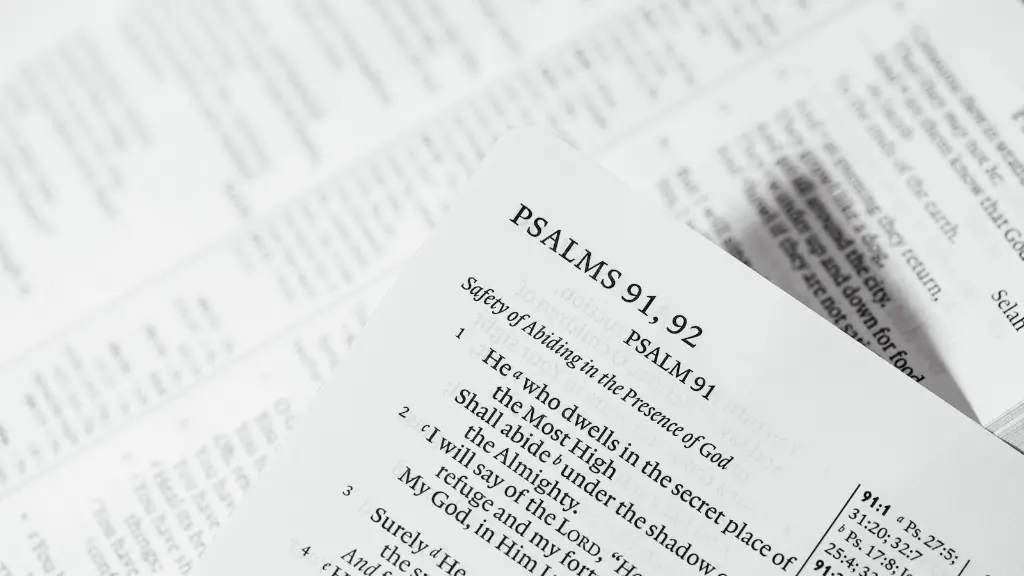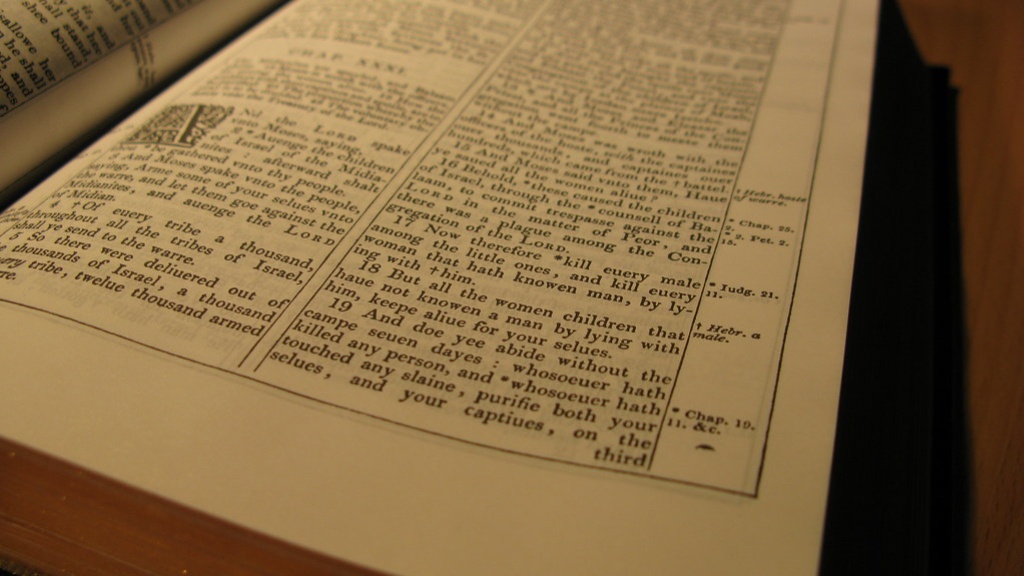The Ten Commandments, written by God and delivered to the Israelites through Moses on top of Mount Sinai, are a crucial part of Biblical literature. They are widely regarded as the most important of all of the Bible’s teachings and have been used to shape the moral compass of countless individuals and generations. But where in the Bible are they? To answer this, we dive into the Books of Exodus and Deuteronomy, two of the oldest books in the Bible, to uncover the text and context of these ten special verses.
According to an archaeologist from the University of Jerusalem, the Ten Commandments are found in two chapters in the books of Exodus and Deuteronomy. Chapter 20 in the Book of Exodus outlines the commandments as Moses receives them from God on Mount Sinai, while Chapter 5 in the Book of Deuteronomy outlines the same commandments as Moses delivers them to the Israelites as they prepare to enter the Promised Land. This book is regarded as the second, or revised, version of the Ten Commandments, as the Israelites respond to God’s instructions to stay true to the laws that have been given to them through Moses.
The Ten Commandments are most noted for their rules regarding one’s relationship with God and with each other, such as not having false idols, not taking the Lord’s name in vain and honoring one’s parents. In addition, they also provide guidance on ethical issues such as not stealing, not bearing false witness and not coveting. These commandments function more than simply moral decrees however; they have acted as the moral foundation for many societies around the world to adhere to, regardless of religious preference.
The Ten Commandments, therefore, sum up the essence of Biblical laws, providing not just a teaching for the Israelites, but for mankind as a whole. However, critics of the Bible argue that the Ten Commandments are outdated and no longer applicable in the modern world due to their religious connotations. They suggest that while the ideas of the Commandments are relevant, they should be revised to better reflect contemporary social values and ethical concerns.
What is clear, however, is that the Ten Commandments are essential elements of Biblical literature and religion, and have been a source of inspiration for countless generations. The Ten Commandments, then, continue to influence our lives and our consumption of media, culture, and education even today, reminding us of the moral foundation that was laid down over three thousand years ago.
The Role of Ancient Israelites
Current scholars reviewing the Bible believe that the Ten Commandments were initially given to the ancient Israelites as part of a larger, comprehensive “covenant,” or agreement, between God and His people. This rule-based system of laws and instructions were meant to guide the Israelites as they journeyed in pursuit of the Promised Land, and the Ten Commandments were their guiding moral code. They were expected to adhere to these commandments, not just as a way to stay close to God, but also to maintain their cultural identity amidst their surrounding civilizations.
The Israelites’ embrace of the Ten Commandments was so strong that they eventually created a sophisticated court system to enforce the rules of the covenant. This court system relied heavily on officials appointed by Moses, who were responsible for interpreting and applying the Ten Commandments to their own community—establishing a unified system of law and order.
At the same time, there is evidence that the Israelites were unable to fully live up to the Ten Commandments, as the Bible records multiple instances of disobedience. Despite this, the Ten Commandments laid the foundation for the justice system to be established and endure for centuries, eventually leading to the development of legal systems and laws in other nations.
Impact Over Time
While the Ten Commandments were originally written for the ancient Israelites, their influence has been felt around the world for thousands of years. Religious texts from many different faiths cite the Ten Commandments, while legal systems are still based on the same principles set forth in the Old Testament. This is especially evident in Western legal systems, which largely drew on the commandments to create their respective laws.
The impact of the Ten Commandments can also be felt outside of legal systems. For example, ideas of justice, fairness, and equality—all of which are found in the Commandments—are now commonplace in modern society. Moreover, the Ten Commandments have been used as the basis for debates over numerous social and political issues facing the world today. The Commandments, therefore, have had a profound influence for centuries, and their legacy continues on even to this day.
Reinterpretation of Texts
However, there has been some attempt to reinterpret the original text of the Ten Commandments so as to make them more palatable to modern society. Instead of the classic interpretation, there has been a shift towards alternative interpretations that focus on the core values of the Commandments and how they can be applied in contemporary settings. For example, some theologians have argued that “thou shalt not bear false witness” should be interpreted not only as prohibiting lying, but also other forms of deception such as trolling and cyberbullying.
Others have suggested that “thou shalt not steal” should be reinterpreted to include theft of intellectual property and infringements on copyright. In addition, some people have argued that, while the original set of Ten Commandments was meant solely for worship of God, the general principles can be applied to all forms of worship, regardless of religious affiliation. In this way, the Commandments can act as a moral touchpoint for people of all faiths.
This type of reinterpretation, while controversial within certain faith circles, demonstrates the flexibility of the Commandments and how they can be applied to today’s ever-changing world. Indeed, the Ten Commandments demonstrate our ability to adapt ancient wisdom for the modern world—a trait that has become increasingly valuable as the world rapid turns and shifts in the 21st century.
Different Versions of Commandments
Notably, there are variations of the Ten Commandments found in different faiths, reflecting the change in religious views from one group to another over time. For example, some modern versions of the Ten Commandments combine several of the original ten into one single decree, while others modify the wording of the commandments to better suit contemporary religious views.
In addition, some religions have omitted certain commandments—the Catholic and Protestant Churches have their own set of Ten Commandments, which omit the commandment banning the worship of false gods and prohibiting the making of graven images. Such modifications suggest that the Ten Commandments, while originally rooted in religious belief, can evolve over time to reflect changing faith practices and values.
The level of understanding of the Ten Commandments has also changed with the passage of time and changes in interpretation. For example, Christians often focus on personal holiness while leaving out large portions of the original text, while modern Jews have begun to view the Commandments as broader mandates of justice and righteousness, rather than strict commandments to be followed by all.
Whatever version or version one prefers, the Ten Commandments are still widely considered a moral standard worth striving for, regardless of religious identity or beliefs. So the next time the question arises, we can point to the Books of Exodus and Deuteronomy and explain where in the Bible we find the Ten Commandments.
Faith Practices and Rituals
Apart from the great legacy of the Ten Commandments, the Bible also outlines various faith practices and rituals that were observed by the Israelites. For instance, the Tabernacle, a movable temple constructed by the Israelites at the behest of God, was the place of their collective worship. In addition, the Israelites were required to partake in ceremonies such as Passover, where a lamb was sacrificed for each family, and the Feast of Weeks, where the first fruits of the spring harvest were offered to God.
The use of rituals and ceremonies in the Bible, then, was a key component of the Israelites’ relationship with God. These religious practices acted as symbols of faith, representing their commitment to God, as well as their communal identity. They were also an integral part of their spiritual journey of becoming closer to God.
These rituals, while no longer practiced by modern worshippers, continue to be rooted in many religious traditions around the world today. Even today, the symbols and practices associated with these ancient religious ceremonies are often still observed during special events, such as Passover and Hanukah, as a way for worshippers to connect with the tradition and spiritual history of past generations.
Church Teachings
In addition to the Hebrew text, the Ten Commandments also became an important part of Christian teachings. In the New Testament, the Commandments are seen as inseparable from other commandments and teachings of Jesus—they are considered the foundation on which all other Christian laws and teachings rest.
The Ten Commandments were also heavily emphasized in the early Church, with various Church Fathers and theologians citing them as the basis for their theological writings. This focus on the Commandments, however, began to shift as the Church grew in size, allowing for a greater focus on Christian principles and values as seen in Jesus’ teachings.
Nevertheless, while they may not be prolifically discussed in present-day sermons, the Ten Commandments remain a mainstay of Christian faith and a model that Christians should aspire to. From the Books of Exodus and Deuteronomy to the New Testament, the moral codes and teachings of the Ten Commandments truly have become foundational elements in the history of religion.
Symbolism and Art
The Ten Commandments are so influential that they have been featured in various forms and styles of art throughout history. Paintings, sculptures and reliefs all pay homage to this ancient rule-based system of laws and instructions, as do books, hymns, and religious dramas. This artier expression of the Ten Commandments, then, demonstrates the importance of this set of rules not just in religion, but in the broader culture of mankind.
In addition to their visual representation, the Ten Commandments also function as a literary device in a variety of religious texts. For example, they often appear as a type of rhetorical device, where they are used to demonstrate the authority of a divine being, or as a metaphor for obedience, justice and faith in later writings.
The Ten Commandments, therefore, have been a source of creative inspiration and religious devotion for centuries. Even today, these Commandments have continued to resonate with millions of people around the world, drawing them closer to God and reminding them of the moral principles that can bring us all together.





